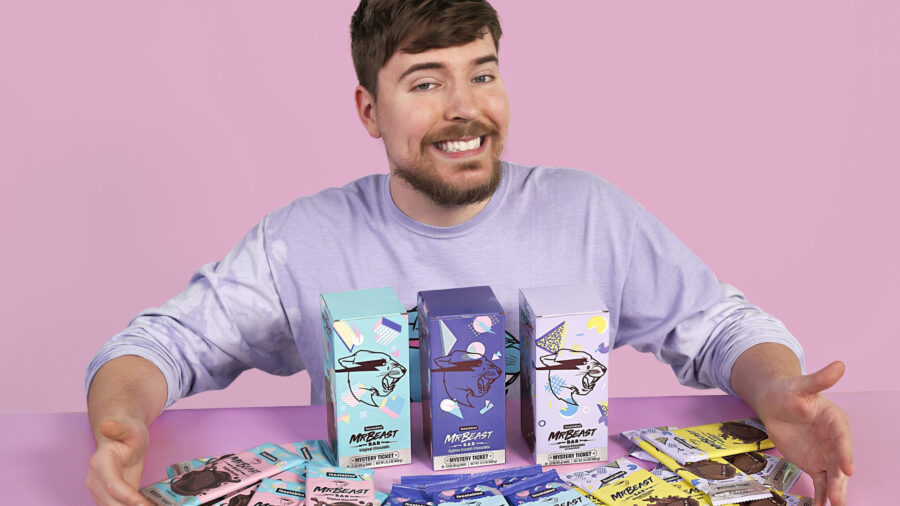Let’s take a look at the consumer perceptions driving disruptive brands, like Feastables chocolate from MrBeast.
Manufacturers are feeling pressure on both price and experience: Food and beverage manufacturers are feeling pressure from both store brands and upstarts. And nowhere is this more evident than in the snacks and confections space with the meteoric growth of MrBeast’s Feastables brand.
MrBeast’s media reach is obviously formidable – his YouTube channel has 217 million subscribers, after all – but in assessing why brands like this are making real impacts, there’s more to the consumer story.
Leveraging data insights from research firm Alpha-Diver and its 2023 Snack 50 study and reports (conducted in partnership with The Food Institute), a theme emerges in consumer decision making, and is even more pronounced for younger consumers/Gen Z…
Consumers are looking for excitement: Essentially, consumers favor brands that serve impulse, provide excitement, and help them feel emotionally better in the immediate term. This decision-making factor supersedes brands that consumers perceive as providing functional benefits, social connection, or unique/innovative experiences.
While Feastables was not included in the study, the brand’s equity is clearly in this high-impulse, more aggressive space – from the product names, to the visual equity, to communications. And while established brands like Reese, Hershey, M&M, Kit-Kat, Twix, and Snickers fare well in the ratings, many slip in the eyes of younger consumers, with Hershey chocolate, and M&Ms notably slipping 8 and 11 spots, respectively, in the Snack 50 Gen Z-specific ranking.
Consumers perceive these brands to serve less of the excitement mindset, and more of a unique sensory experience mindset. So, while many legacy brands are strong on experience, they’re lacking on the excitement MrBeast brings. Fruity, chewy brands like Sour Patch Kids and Airheads each climbed 18 spots in the Snack 50 ranking with younger consumers, as both are perceived to serve this impulsive, excitement-driving motivation.
Flash in the pan, or enduring brands?: The key takeaway is that “feels” trump facts. Exciting, feel-good brands are often beating functional, better-for-you, socially-oriented, or highly innovative brands – because younger consumers use snacks as a means to feel emotionally better via a bit of excitement.
In terms of assessing the longevity of disruptive brands like Feastables, it’s notable that the brand incorporates several highly functional attributes: organic cocoa, grass-fed cows, short ingredient list, plant-based offerings, etcetera.
While those support points provide an alibi for consumers, Alpha-Diver’s longitudinal data show that brands that make it past fleeting growth – and achieve more stable volumes in the market – are those that eventually assimilate to the core categories in which they reside. So, in the case of Feastables chocolate, if the brand evolves into more unique, innovative sensory experiences (beyond the chocolate and nuts basics that comprise the portfolio now), the brand may have the formula to stand the test of time.
As larger manufacturers work to ward-off volume drain from these upstarts, they’ll need to align their brand and innovation strategies with the more individualized, high-sensory excitement consumers are seeking.
The complete Snack50 reports are available for download.
Editor’s note: Hunter Thurman is the president of Alpha-Diver, a top global and local market research company based in Cincinnati, Ohio.
The Food Institute Podcast
How do you measure the financial efficiency of a fan-driven food business? Dr. James Richardson, owner of Premium Growth Solutions and author of Ramping Your Brand, joins The Food Institute Podcast to define these types of businesses and how they can succeed. Dr. Richardson pulls on historical and recent examples of these types of businesses, and what common threads contribute to their success.












